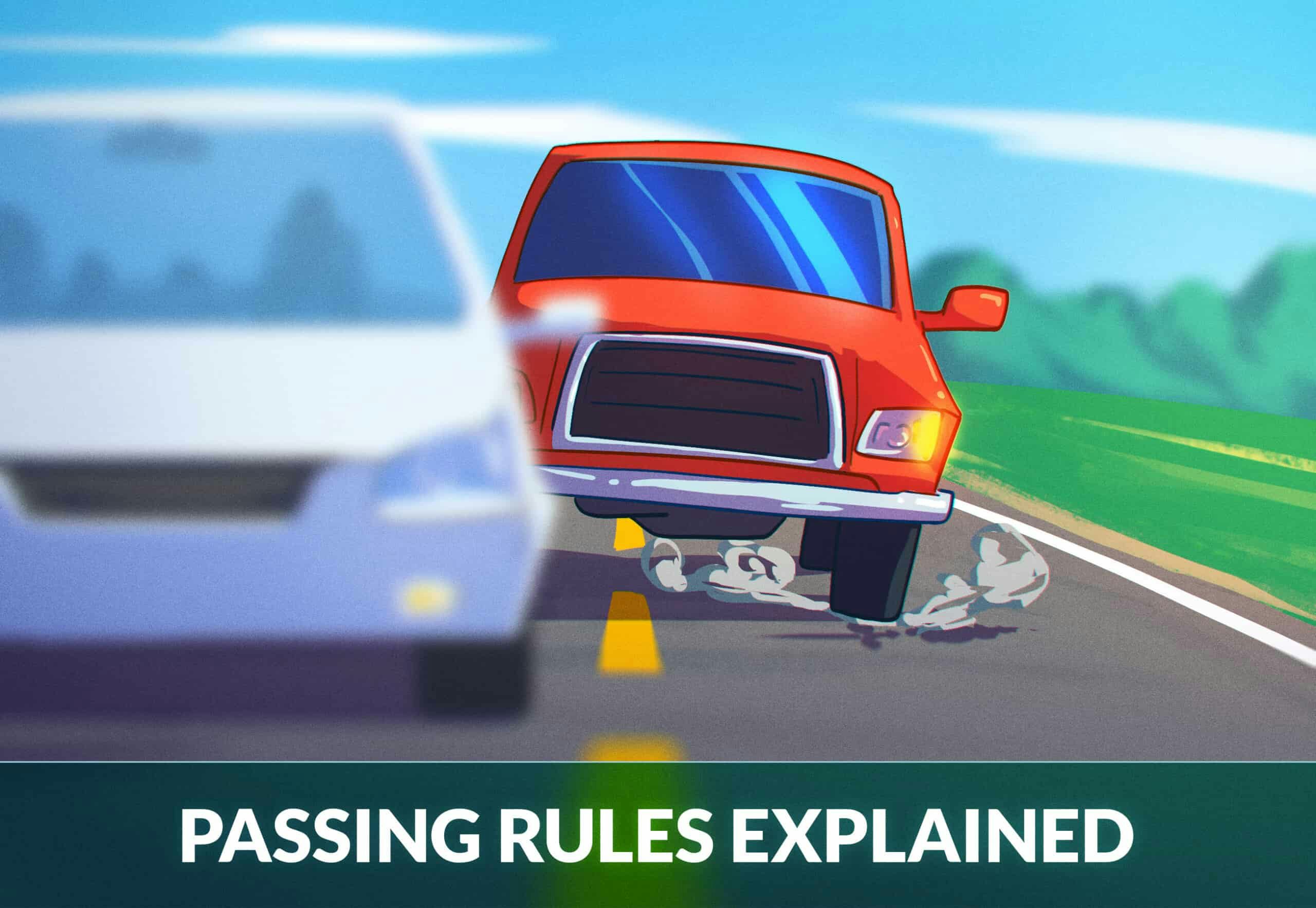
Tips & Rules for Passing Another Vehicle – A Complete Driver’s Guide
As a driver, you should avoid the temptation of passing other vehicles if you can, as it will put you at considerably more risk of being involved in an accident. However, you will need to pass other vehicles from time to time, and then it’s good to know the passing rules and how to complete the maneuver safely.
Today, we’ll go through:
- Safety Tips and General Rules for Passing Other Vehicles
- How to Successfully Pass Another Vehicle in 9 Steps
- Passing When There is Oncoming Traffic
- When You Are Prohibited From Passing Another Vehicle
- Rules for Passing on the Right
- What You Should Do When Being Passed
If you prefer video, check out our thorough explainer video on the subject:
Safety Tips and General Rules for Passing Other Vehicles
Passing can be very dangerous if done incorrectly – here are 11 safety tips and/or rules to remember:
- Always make sure that the road ahead is clear before passing, and that you have a large enough gap in oncoming traffic – don’t create a dangerous situation because you have short patience.
- Avoid passing vehicles such as motorcycles and bicycles, especially on a two-lane road.
- Never exceed the speed limit when passing! Doing so is dangerous and illegal. If you need to exceed the speed limit to pass, there is no need to pass.
- In general, you must pass on the left side of vehicles. In some very specific circumstances, you can pass on the right side.
- It is often illegal and unsafe to pass vehicles when your line-of-sight is limited or restricted by a hill, curve, or weather conditions.
- It is illegal to pass traffic when there is a solid yellow line on your side of the roadway.
- Never pass a stopped school bus that is and loading or unloading children.
- Don’t pass a stopped school bus if the red flashing lights are activated or the stop signs are extended.
- If passing at night, you can lightly tap your horn or flash your headlights to let the driver ahead of you know you are about to overtake.
- When passing, keep within the painted road edge or on the paved part of the road. Driving on the shoulder of the road or off the paved portion of the road may cause you to lose control over your vehicle.
- Don’t move back to the original lane before you can see both headlights of the vehicle you just passed in the rear-view mirror. You may force the vehicle you have just passed to brake or cause a car crash.
You must constantly be aware of passing vehicles. Frequently check your mirrors, and if you see that someone behind you is intending to pass, it will be a good idea to move into a far-right lane.
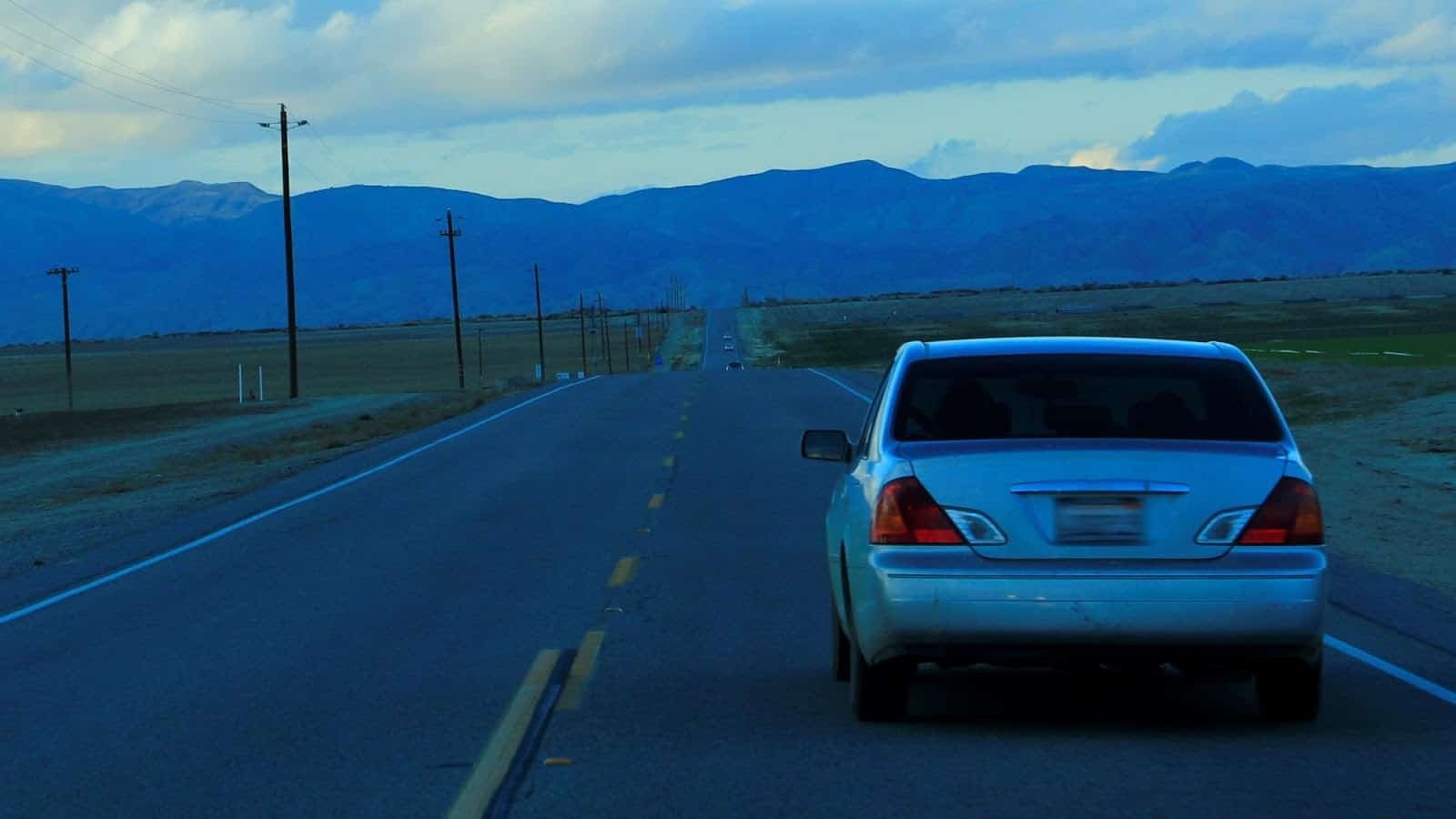
Passing on the Left
To successfully pass on the left in traffic, pay special attention to:
- Oncoming vehicles
- Obstructions on the road
- Hazardous road conditions
- Hills/curves which limit your vision
- Intersections
- Cyclists on the road
- School buses

How to Successfully Pass Another Vehicle in 9 Steps
- Look ahead for approaching traffic to see if you can pass safely
- Look behind for vehicles using mirrors and blind spots
- Signal left to give adequate warning to other road users
- Make sure that there is enough space for the overtaking maneuver
- Accelerate and move to the left lane, but don’t accelerate past the speed limit
- Turn off the turn signal
- Signal right once you can safely turn back into the right lane
- Turn back to the right lane (don’t turn back too close to the vehicle you’re passing)
- Turn off the turn signal
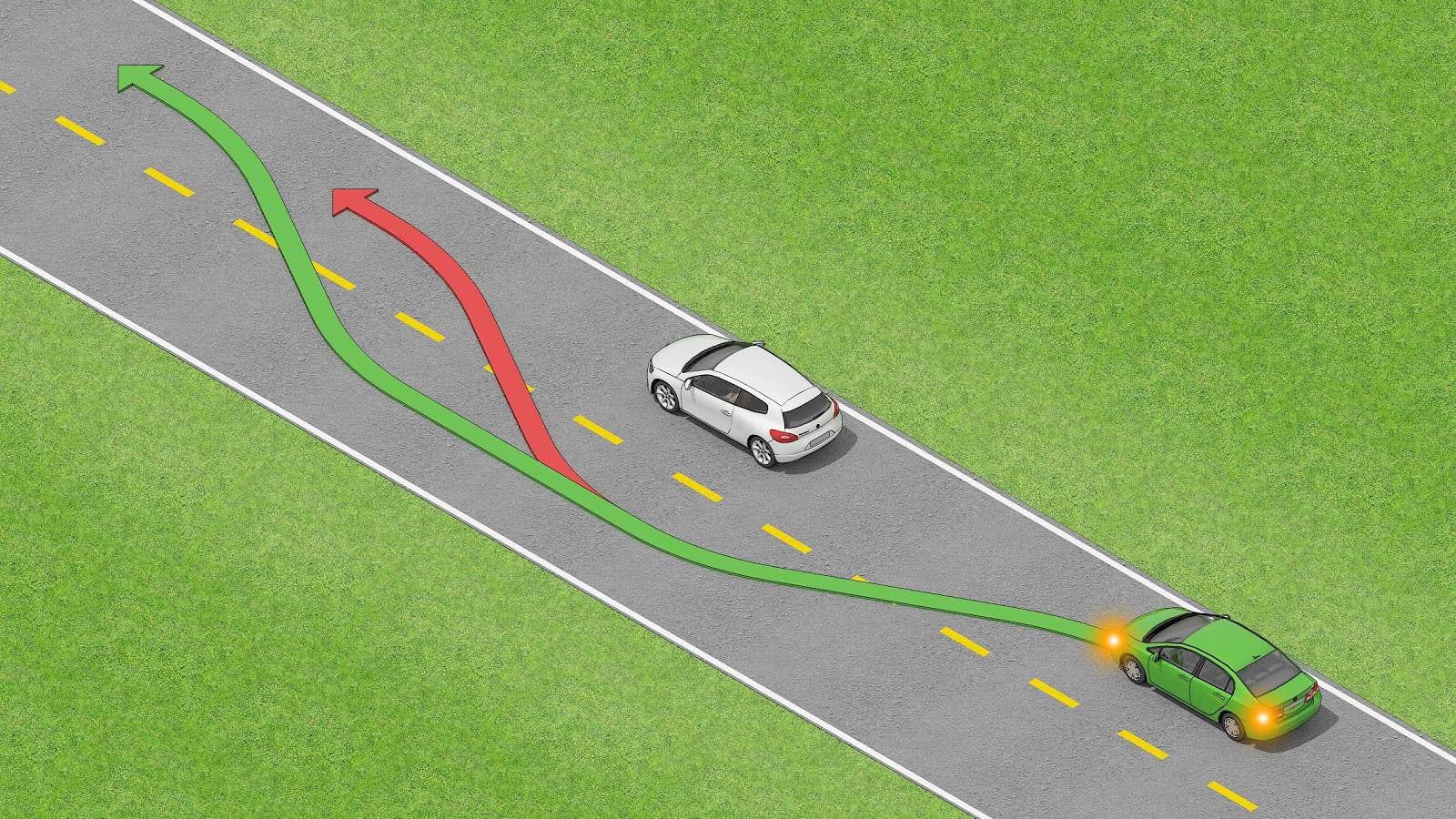
Passing When There is Oncoming Traffic
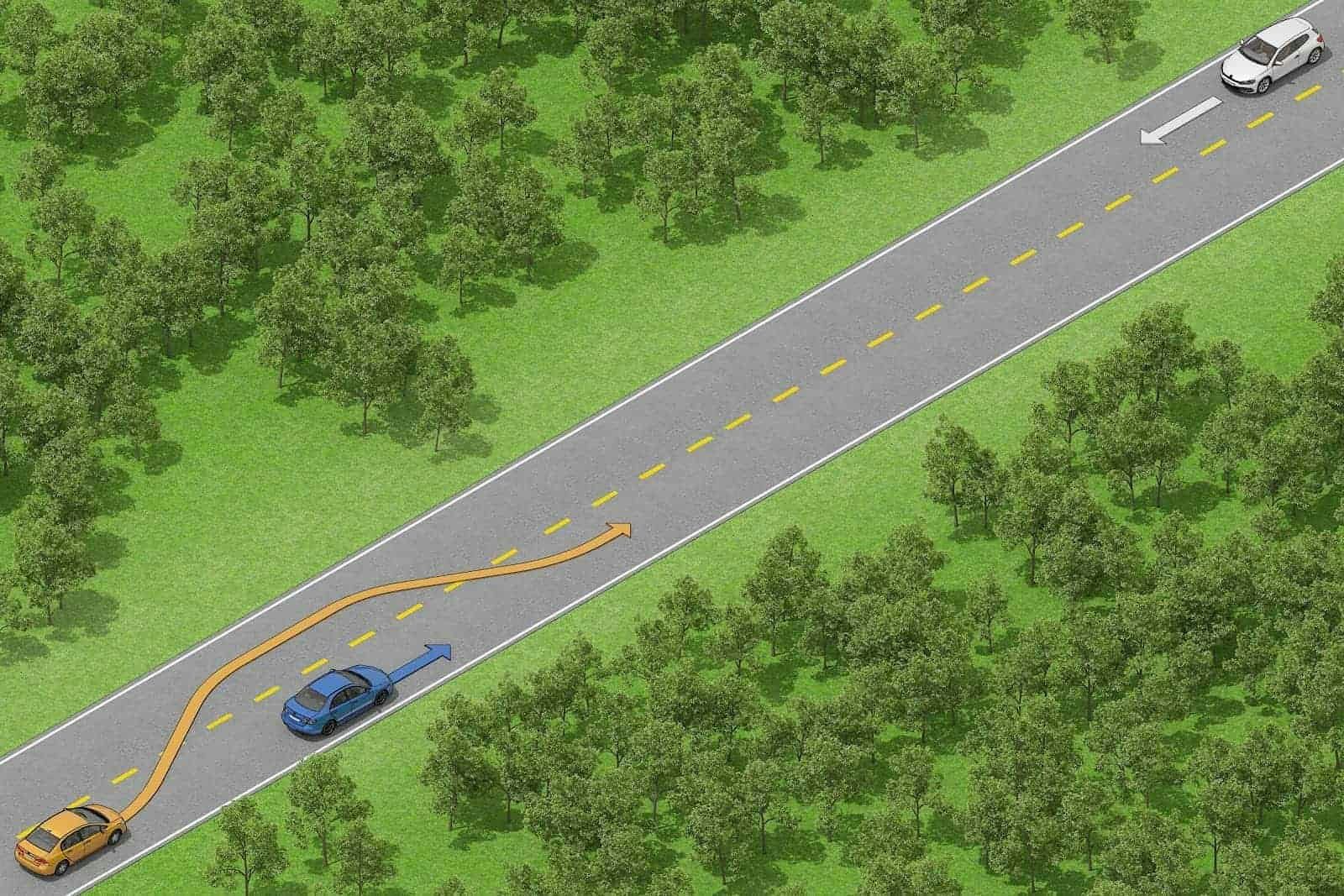
Be careful not to underestimate the space and time needed to perform a safe passing maneuver. The space between you and an oncoming vehicle will quickly disappear as you are both traveling toward each other. If you’re unsure, don’t attempt to pass.
When traveling at highway speeds you will need at least a 10-12 second gap (about ⅓ of a mile) in oncoming traffic to pass safely. It’s very difficult to judge the speed of oncoming vehicles from such a distance, which makes passing on highways especially dangerous.
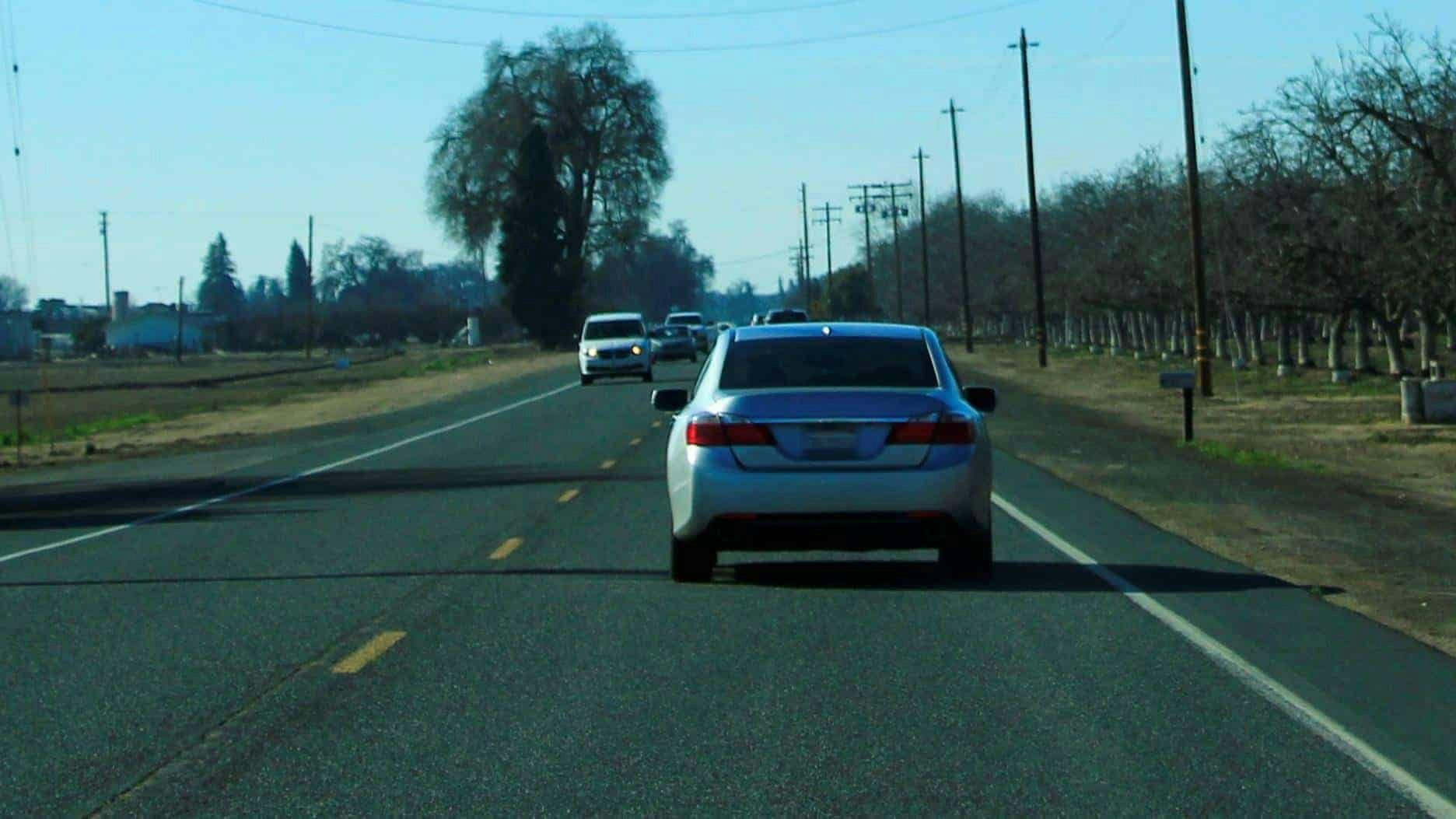
When Are You Not Allowed to Pass Another Vehicle?
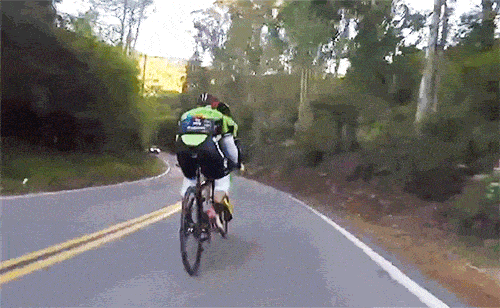
There are certain situations where passing is unsafe or prohibited due to safety concerns, emergency vehicles, traffic conditions, and weather conditions.
In general, do NOT attempt to pass in the following situations (for state-specific rules, see our drivers ed courses):
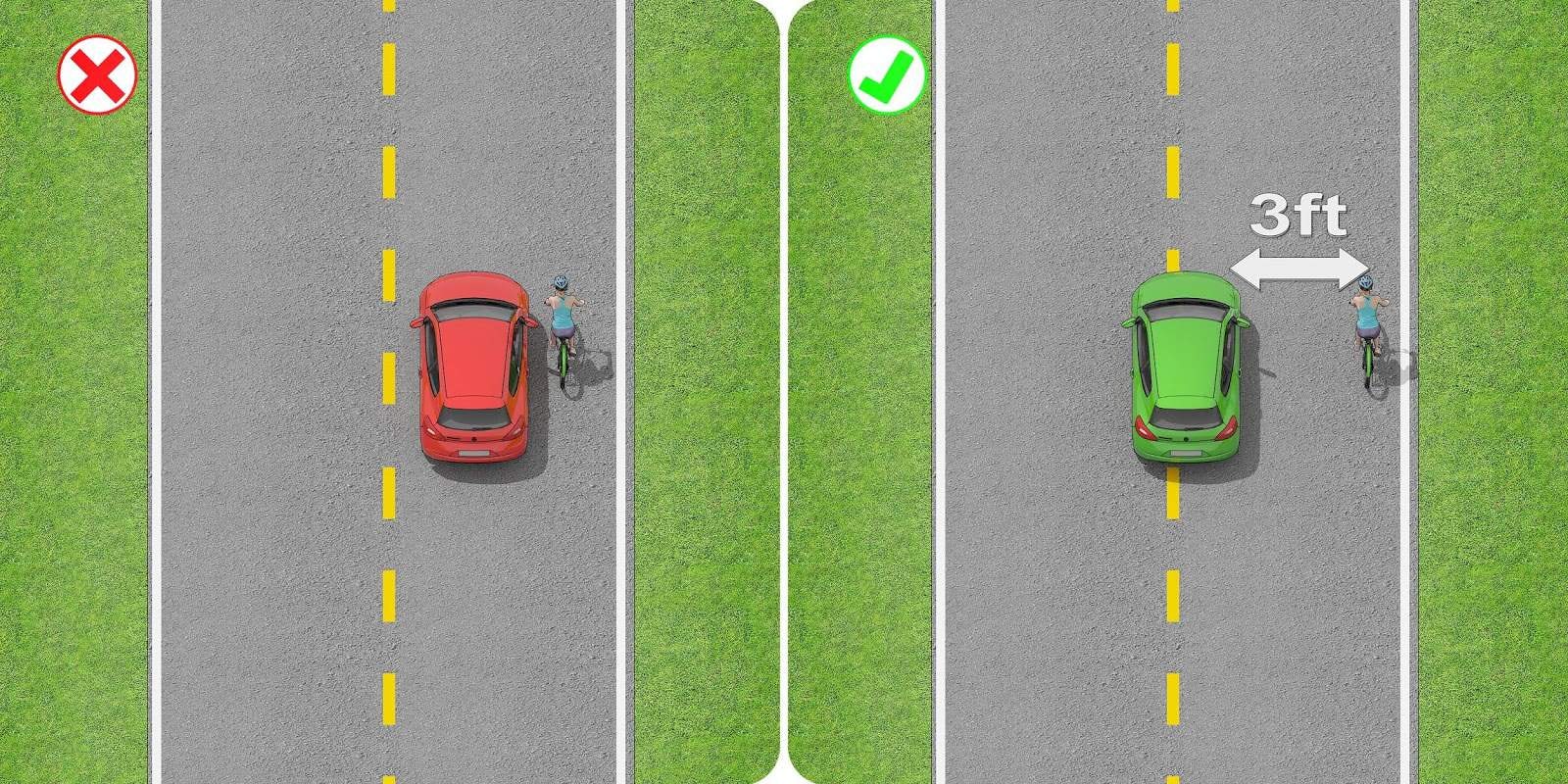
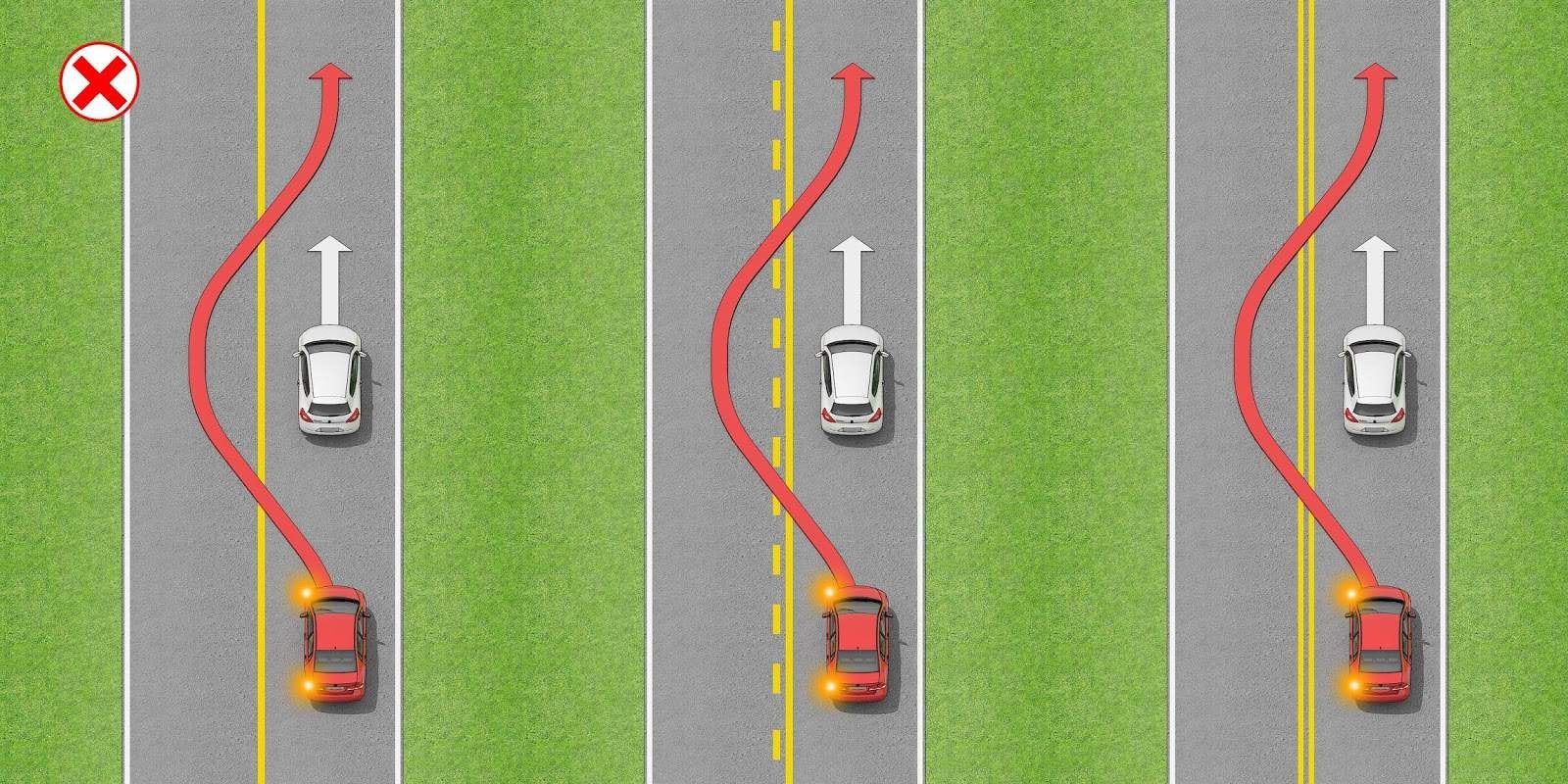
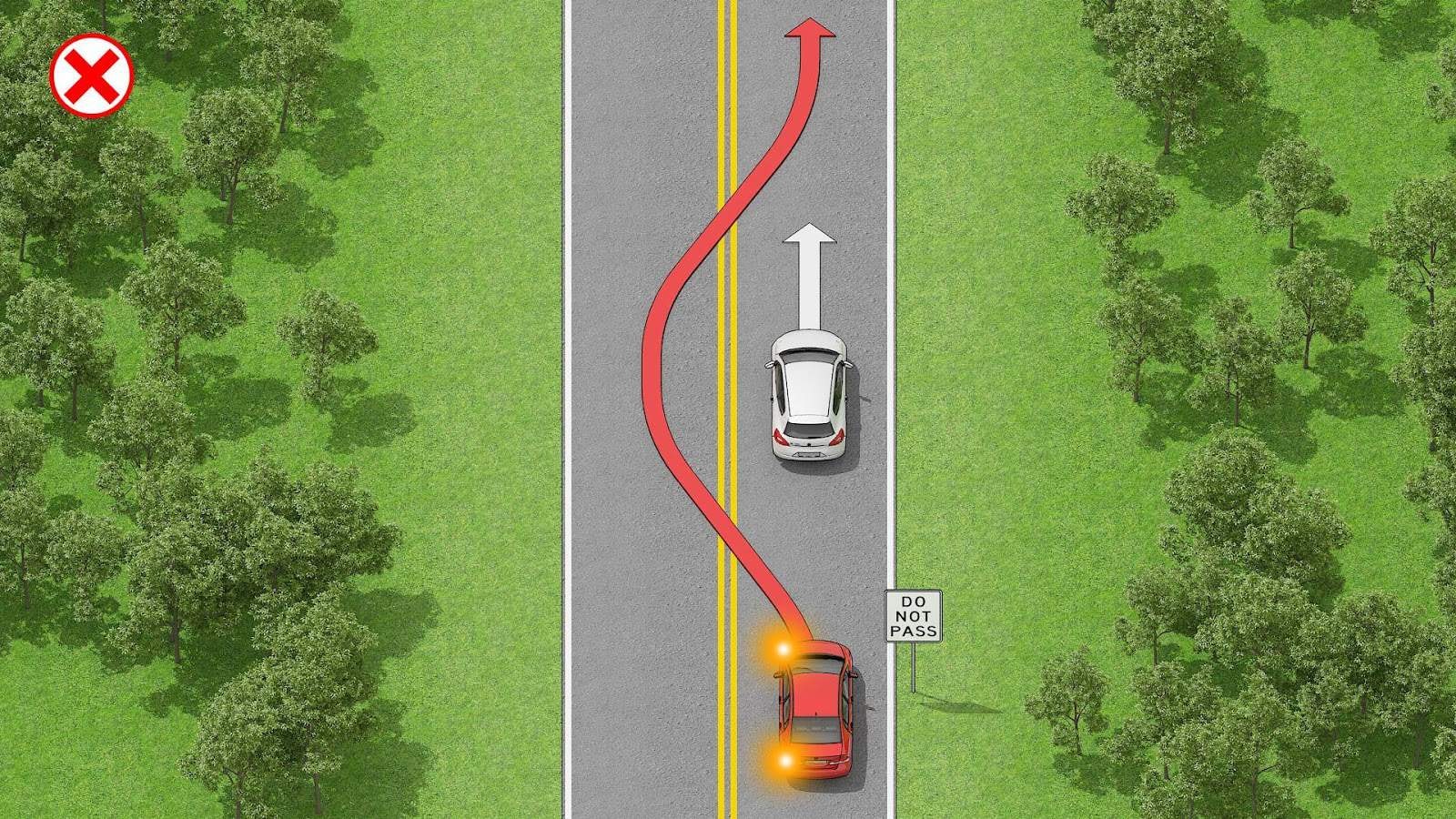
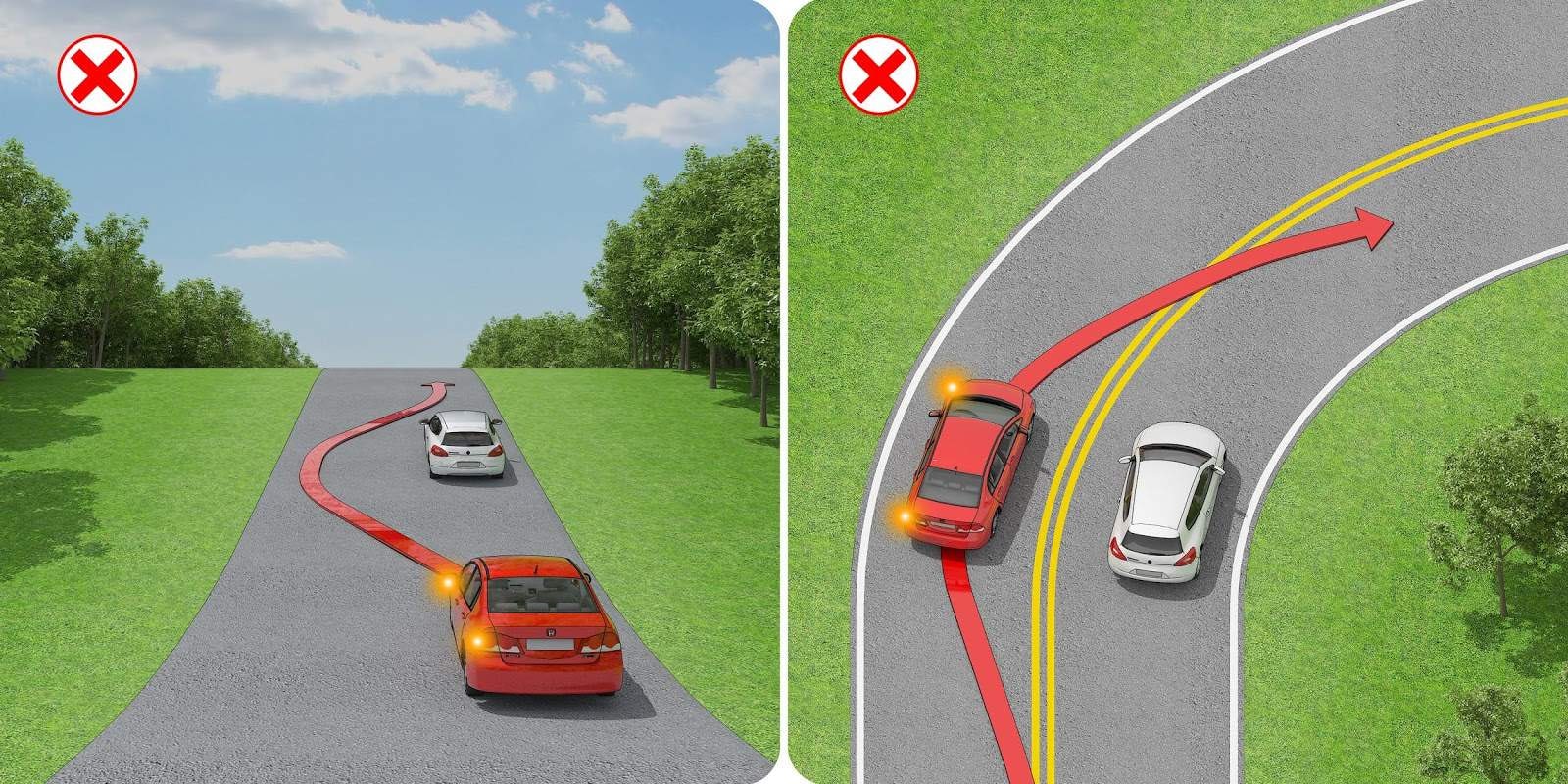
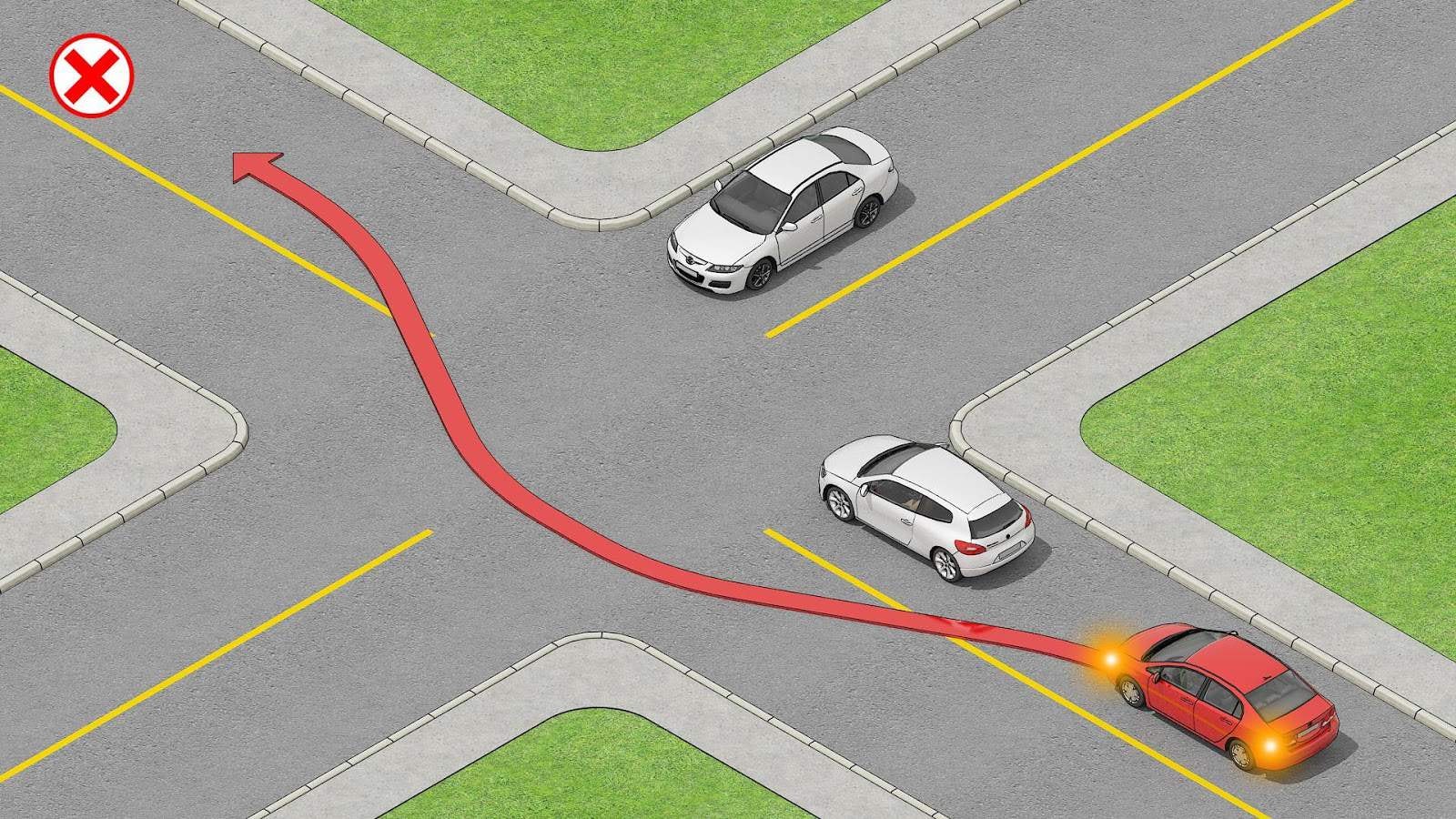
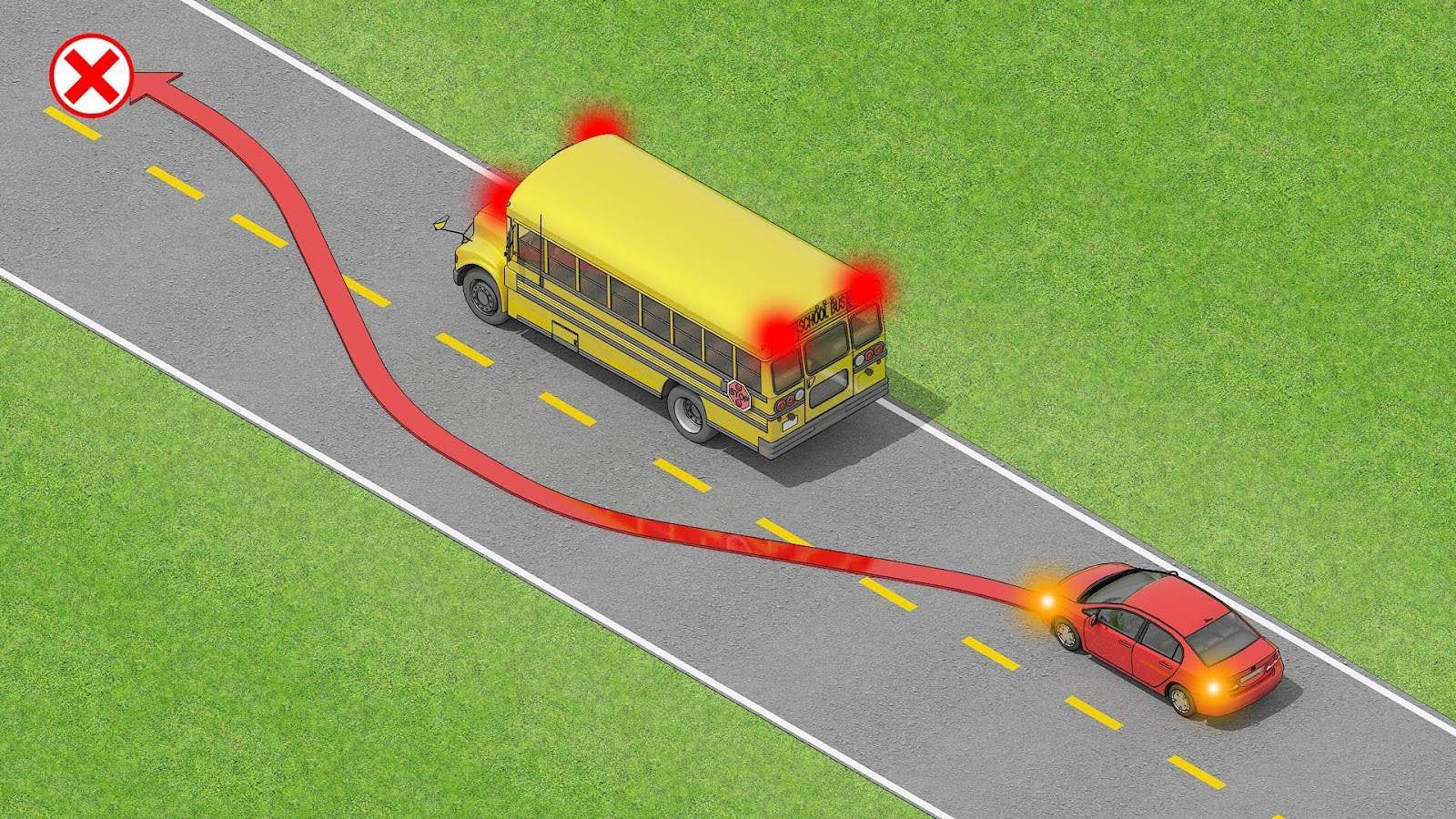
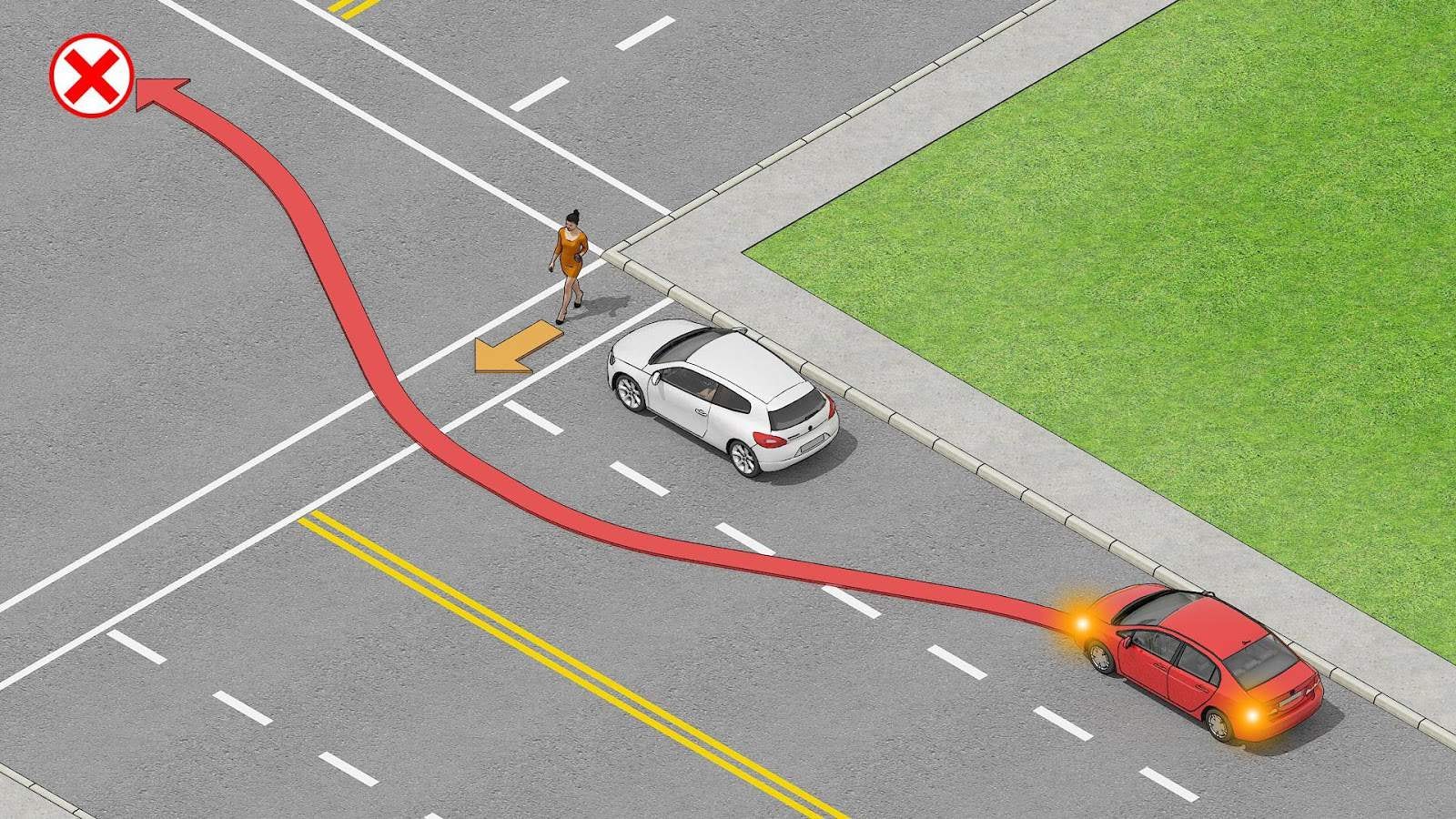
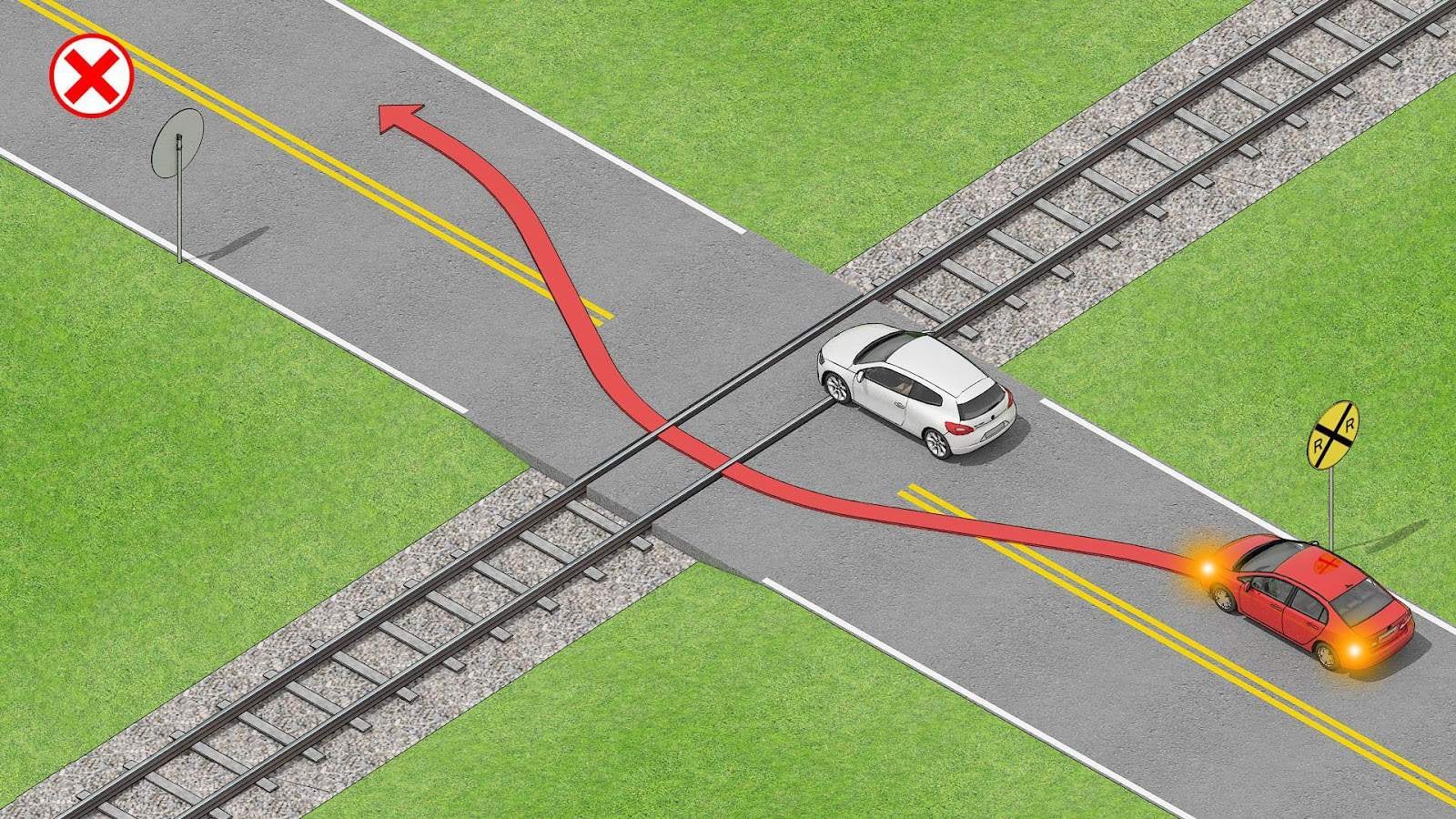
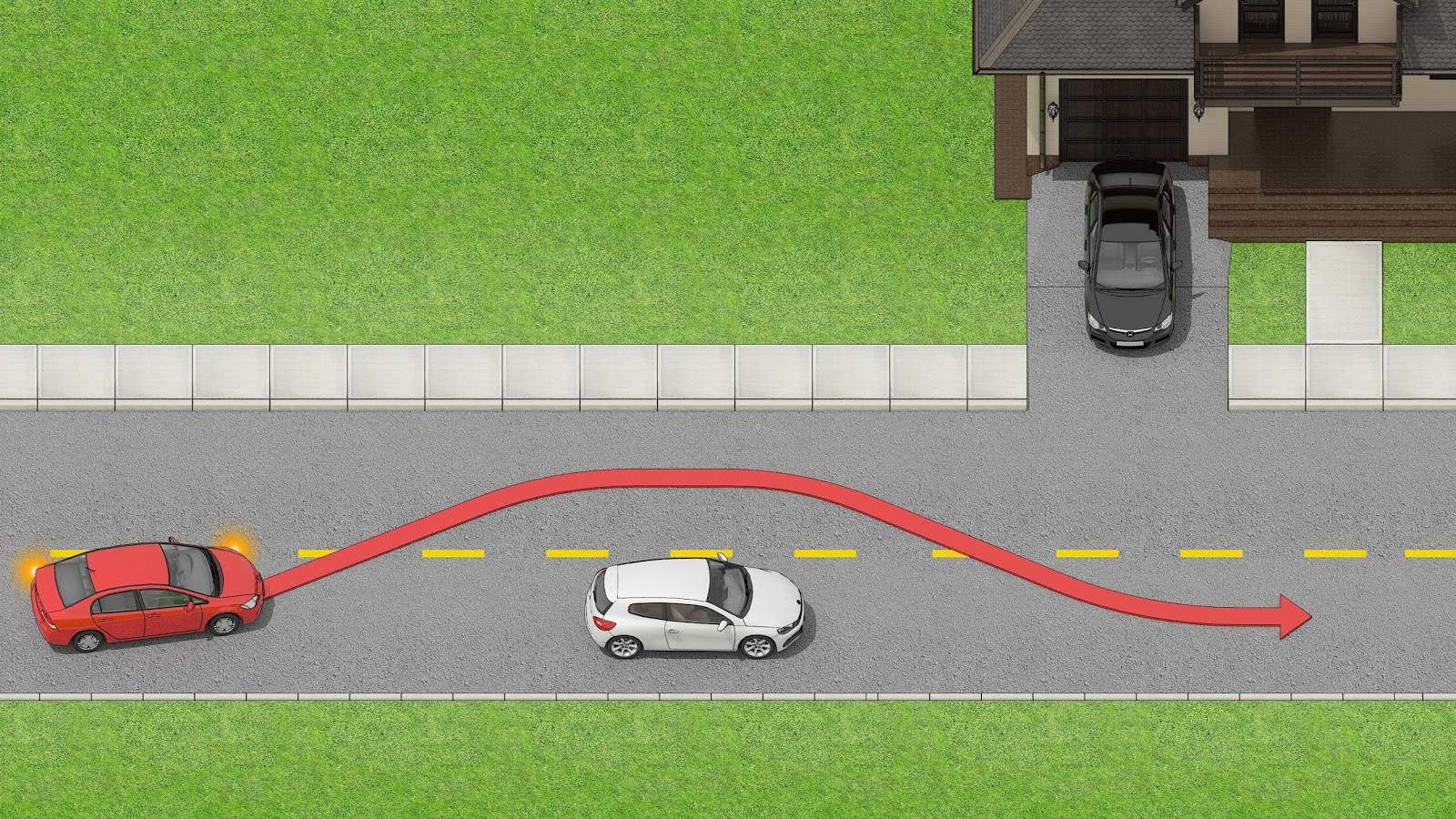
Rules for Passing on the Right
It’s illegal to pass on the right side of vehicles in most situations. However, there are some cases when you’re allowed to pass on the right. These are the exceptions for California:
- When traveling on a one-way street
- When a vehicle ahead is signaling to make a left turn, and you can keep your vehicle on the roadway when passing
- If multiple lanes are meant for travel in the same direction
Be careful when passing a stationary vehicle making a left turn as other drivers may be unable to see you and assume it’s safe to turn across your path.
Make sure to reference your state driver’s handbook for the specific rules in your state.
What Should You Do When Being Passed?
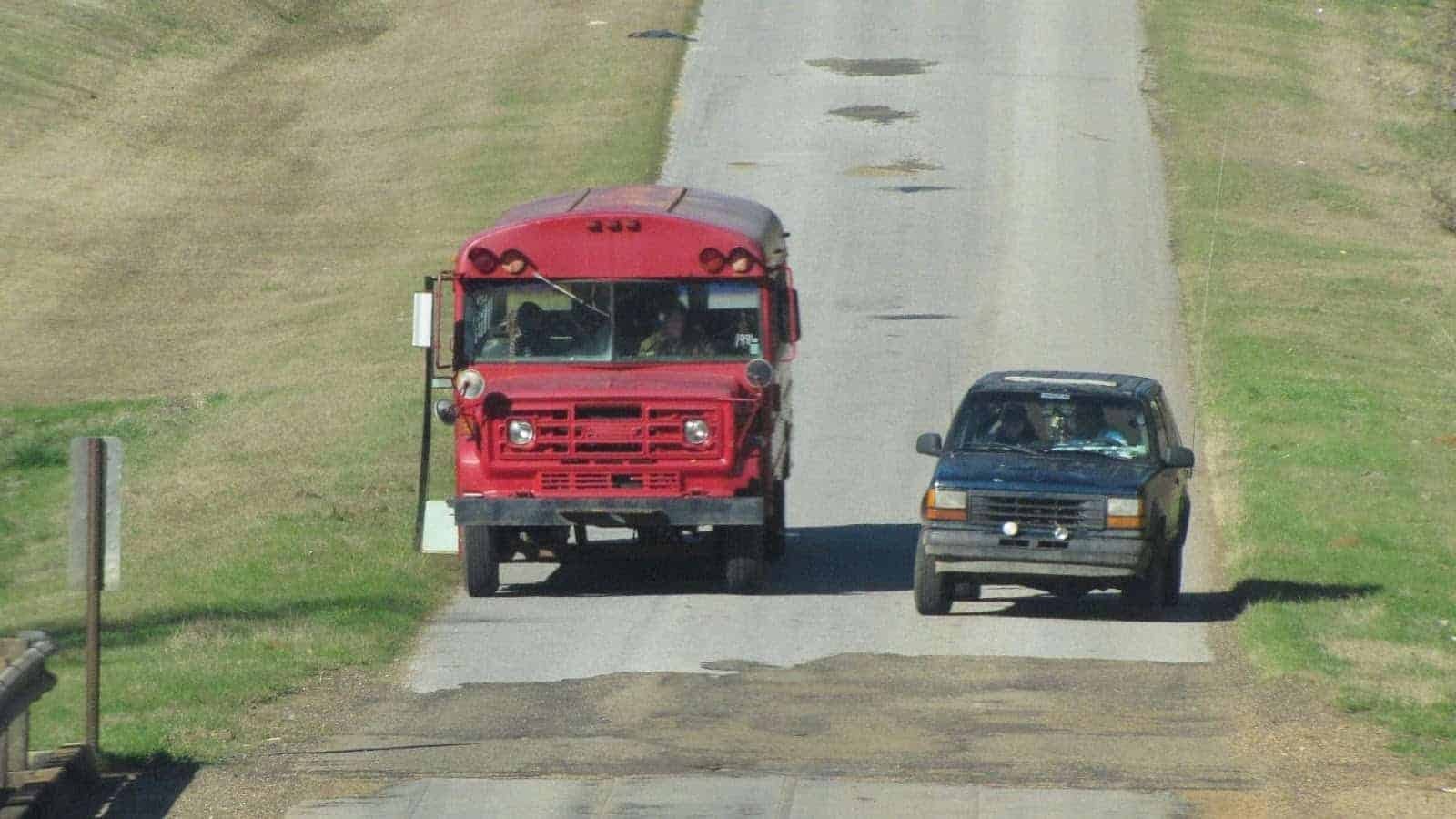
When another vehicle is passing you or signaling to pass, keep to the right, and maintain or decrease your speed slightly. Don’t make any sudden turns or lane changes, and prepare to let the passing vehicle come back into your lane.

Avoid beginner mistakes with expert advice
Build road test confidence and reduce anxiety
Make at-home lessons a success with our parent guide
Recommended articles
Ace your DMV test, guaranteed
Want to Be the Top School in Your Area?
- Simple & automated admin
- More time for teaching
- #1 learning materials for students


